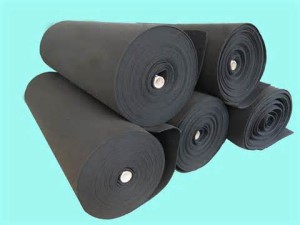Air Date: 1-16-2015 | Episode: 352
This week we return to our series with Dr. Richard Corsi and his Doctoral Candidate students at the University of Texas at Austin. Joining us for Part three of our series is Josh Alred…
Full Description:
This week we return to our series with Dr. Richard Corsi and his Doctoral Candidate students at the University of Texas at Austin. Joining us for Part three of our series is Josh Alred. Josh is currently stationed in Austin as part of his active duty service in the US Air Force. The Air Force is sponsoring his attendance at U of T while he completes his work on his PhD. From 20010 until 2012 Mr. Aldred was an instructor and Assistant Professor at the US Air Force Academy. His dissertation is titled “The Nexus of Energy and Health: A systems Analysis of the Costs and Benefits of Ozone Control by Activated Carbon Filtration in Buildings. We will discuss the practical applications of his various research projects and papers including an interesting paper on investigating the effects of ambient air pollution on military personnel serving in the Middle East.
Richard Corsi, PhD is the Chair & ECH Bantel Professor for Professional Practice Civil, Architectural & Environmental Engineering at The University of Texas at Austin. He earned his Ph.D. in civil engineering from the University of California at Davis in 1989. He joined the faculty of The University of Texas at Austin in 1994. Dr. Corsi researches indoor air quality, including sources and control of indoor air pollution and human exposure to indoor toxins.
Z-Man’s Blog
Ozone Trapper
University of Texas Professor, Richard Corsi PhD and his doctoral candidate Josh Aldred were the guests on last week’s episode of IAQradio. The subject of Josh’s dissertation is the use of activated carbon to reduce indoor ozone exposure within buildings.
![]() Nuggets mined from the program:
Nuggets mined from the program:
• Military technologies that transferred to the civilian sector include mobilization methods, rapid bridge building and activated carbon infused protective chemical suits.
• US Air Force is studying practical methods for water purification.
• Ozone is a nasty chemical which is regulated outdoors. Ozone is known to produce adverse health effects.
• 50% of ozone exposure occurs indoors. Much of the ozone found indoors is brought into buildings through ventilation. The amount of ozone found indoors is often directly related to building design.
• Ozone levels in well ventilated buildings mimic outdoor levels. Indoor ozone levels are commonly 30%-60% lower than outdoors. The ozone level in new tight buildings averages 5% of outdoor ozone levels.
• Indoor sources of ozone include: photo copiers, laser printers, some particulate collection devices and ozone machines generate ozone.
• Ozone reacts indoors producing byproducts: gases and particulate. Byproducts of ozone are irritants which are likely toxins.
• When ozone levels are higher human mortality is higher.
• Ozone exacerbates respiratory problems.
• Activated carbon reduces ozone without producing hazardous byproducts. Activated carbon has been known to reduce VOC and ozone levels for decades. One gram of activated carbon has 11,000 square meters of surface area.
• Activated carbon treated with titanium dioxide or magnesium oxide catalysts is available. Treated carbon may shed hazardous particles.
• Carpet and vegetable oils react with ozone.
• Josh’s work includes modeling of ozone reduction in 12 cities and lab studies.
• The global ozone background level is slowly rising (approximately 20 PPB). Some American cities have peak ozone levels of 80-120 PPB for hours at a time during the summer. Mexico City and cities in India have much higher levels of ozone.
• Two primary types of activated carbon filters are available. Filters comprised of synthetic fabric infused with activated carbon or filters which hold bulk quantities of carbon.
The more activated carbon the better, so bulk filters offer superior performance. Bulk carbon media improves particulate removal. Ozone degrades carbon, the recommended filter change period is every 3 months.
• MERV 7-8 filters and MERV 7-8 with carbon are competitively priced.
• Josh installed bulk carbon filters in a lab on campus and achieved 70% ozone reduction in a single air pass. The lab’s ventilation system was designed to change the air 12 times per hour. By reducing air changes to 6 per hour and installing carbon filters, energy savings on a single HVAC unit will be $50,000 per year.
• Modeling results demonstrate that nursing homes and schools can receive a benefit cost ratio of $1 to $100. Each dollar invested returns $100 in benefits based on energy savings, operating costs and the EPA’s estimated health consequences of ozone. Savings result in energy reduction and reductions in lost work and absenteeism. Schools lose money when students are absent.
Goals:
• Educate, spread the word and change policy.
• Modify ASHRAE standards to incorporate the research.
• Publish results in journals and articles.
• Get word out to practitioners.
• The technology exists today!
Future Research:
• Studying ozone reduction over long term.
• Studying pressure drop in filters over time.
• Finding other applications for carbon filters to improve health by reducing ozone byproducts like formaldehyde.
Combat Zone
Combat troops deployed in the Middle East are exposed to hazardous particulate. A toxic bacteria is attached to the crust of desert soil. There is no EPA in Iraq and Afghanistan. Garbage and human waste is often burned using jet fuel as an accelerant. Incinerators are now being installed on larger bases. Studies link exposure to oil well fires to Lou Gehrig’s Disease (ALS). Younger people in the military are resilient and may have delayed reaction to hazards found in combat zones.
Z-Man signing off










